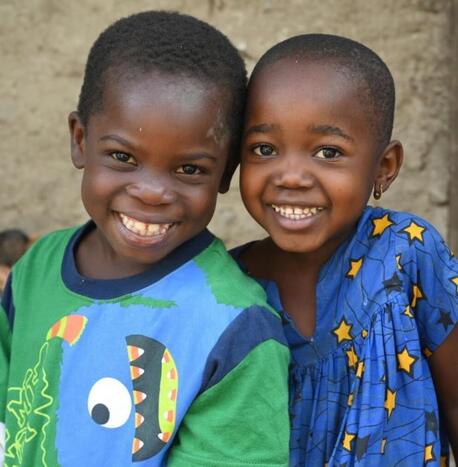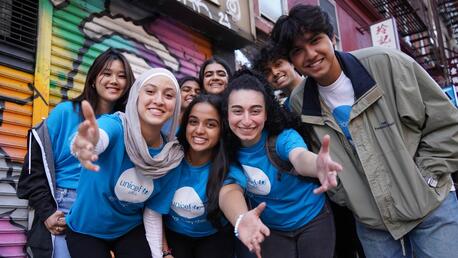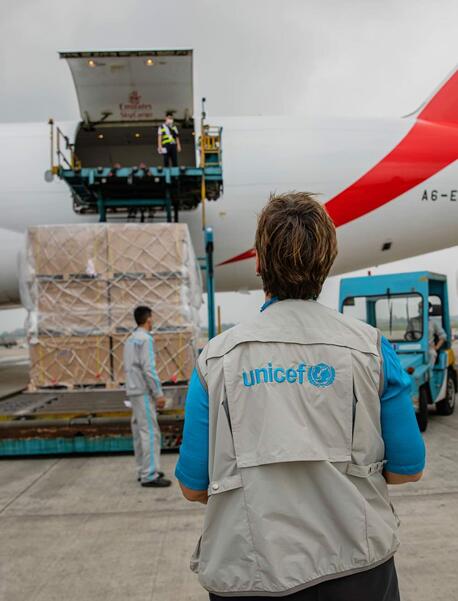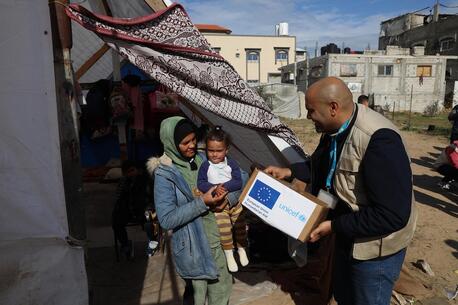
10 Facts You Need to Know Now About Zika
Learn how UNICEF is helping mothers and babies fight Zika worldwide as the viral epidemic spreads in the United States.
Stand for Hope: Help Fight Zika Now
Update 11/08: NIH Announces Zika Vaccine Trials
The National Institutes of Health (NIH) announced the start of Zika vaccine trials yesterday, initially involving 75 volunteers, at the Walter Reed Army Institute of Research in Silver Spring, Maryland.
We urgently need a safe and effective vaccine to protect people from Zika virus infection...
The experimental Zika vaccine was created using the same method that resulted in an effective vaccine for another related virus that causes a disease known as Japanese encephalitis.
“We urgently need a safe and effective vaccine to protect people from Zika virus infection as the virus continues to spread and cause serious public health consequences, particularly for pregnant women and their babies,” said NIH Director Dr. Anthony Fauci.
Update 10/20: Caring for "Zika Babies" is Expensive and Hard
Caring for children with congential Zika syndrome is expensive and exhausting. Worse, some of the hardest hit families in Brazil don't have the money they need to access medical treatment and transportation, particularly if they live in poor, remote rural areas.
Lifetime medical expenses for a "Zika baby" could easily exceed $180,000.
According to the Voice of America News, "... each child with microcephaly in Brazil would cost about $95,000 in lifetime medical expenses, a little more than half the $180,000 it would cost in the United States." Some experts believe the lifetime costs, including a parent's lost income and special education for an affected child, could be much more.
Brazil has confirmed more than 2,000 babies with Zika-related microcephaly so far, with thousands more under investigation. More than half of these children are from poor households with a monthly income of less than $70.
Update 10/18: Continuing Mosquito-borne Zika in Florida
Florida continues to report small numbers of mosquito-borne transmission of the Zika virus, including in a new area of Miami-Dade County — the jurisdiction where mosquito-borne Zika transmission was first reported in the U.S.
Florida has reported 1,031 Zika infections this year.
The only state in the U.S. where mosquitos are transmitting Zika directly, "Florida has reported 1,031 Zika infections this year, with 179 local cases and 847 travel-related cases, including 108 pregnant women," according to The Miami Herald.
Update 10/12: As "Zika Babies" Turn 1, Researchers Find More Health Problems
According to an A.P. report in The New York Times today, doctors in Brazil are finding a range of new, unexpected health problems in "Zika babies." Researchers are now calling this spectrum of birth defects, "Zika Syndrome."

Germana Soares, founder of ‘União de Mães de Anjos’, an organization for Brazilian parents of Zika-affected babies, plays with her 8-month old boy, Guilherme, in a therapy center in Recife, Brazil. Guilherme must take physiotherapy, occupational therapy and speech therapy five days a week. ©UNICEF/UN029601/Libório
For example, doctors have discovered babies born with Zika-induced microcephaly are experiencing severe feeding issues and seizures. Some babies who didn't exhibit microcephaly at birth are developing it later.
And, distressingly, some babies who don't have microcephaly, but were born to mothers infected with Zika during pregnancy, are facing other serious neurological challenges, such as the loss of their ability to control a limb.
Update 10/3: Birth Defects & New Funding
According to a recent Reuters story, Dr. Anthony Fauci, Director of the National Institute of Allergy and Infectious Diseases, offered some worrisome news to a Harvard School of Public Health conference on Zika, held on September 28.
I think we're going to see something very disturbing.
It appears that the risk posed by the Zika virus to developing fetuses may be far greater than previously thought. Dr Fauci said: "If you're talking about any congenital defect, I think it's going to be much higher than 13 percent. I think we're going to see something very disturbing." Current estimates suggest that babies born to mothers infected with Zika have a one percent to 13 percent chance of developing microcephaly.
But, even among ZIka-infected babies without microcephaly in Brazil, the hardest hit country to date, doctors there are dicovering neurological deficits. Symptoms include: seizures, agitation and frequent crying, and a severe type of reflux that prevents these babies from eating, making it unclear how long they will live.
Dr. Fauci emphasized the importance of moving ahead with Zika vaccine trials, now that the U.S. Congress has approved new Zika funding.
To date, Zika has infected 25,694 people in the U.S. and its territories, with 21 babies afflicted by microcephaly.
Stand for Hope: Help Fight Zika Now
1. What is Zika?
First isolated in 1947 in the Zika Forest in the African country of Uganda, "Zika" is an infection caused by the Zika virus, a member of the Flaviviridae family of viruses. It is closely related to the dengue, yellow fever, Japanese encephalitis and West Nile viruses.
Watch an extraordinary story about "Baby Duda," an infant girl in Brazil afflicted with Zika-associated microcephaly, two of her foster mothers and the UNICEF-supported programs that enable them to care for her.
The recent outbreak of Zika in Brazil — and in the rest of Latin America, the Caribbean, the United States, Canada and parts of Europe — was caused by a more virulent viral strain from Asia. This strain traveled across the Pacific, infecting people in island nations there, including French Polynesia.
The Asian Zika strain may be more predisposed to attack nerve cells and the developing neurological system of embryos than the Zika strain first discovered in Africa.

Above, a digitally-colorized transmission electron micrograph shows Zika virus particles (colored red). They are a mere 40 nanometers in diameter, including an outer envelope and a dense inner core. ©CDC/Goldsmith
Many infected with Zika won’t experience any symptoms.
Many people infected with Zika virus won’t experience any symptoms or will only have mild symptoms. These may include fever, rash, joint pain and conjunctivitis (“pink eye”), muscle pain or headache. Any illness is usually mild, with symptoms lasting for several days to a week after you are infected.
Pregnant women and their developing babies are at the greatest risk.
A small proportion of infected individuals may also develop temporary paralysis called Guillain-Barré Syndrome.
Pregnant women and their developing babies, however, are at greatest risk from Zika.
2. Is Zika a threat in the U.S.?
As of August 24, the federal Centers for Disease Control and Prevention (CDC) reported 2,517 cases of Zika within the continental U.S.
Zika continues to spread in the U.S. and its territories.

According to the CDC, the best way to protect yourself and your family from Zika is to prevent being bitten by mosquitoes. Use insect repellent or wear long sleeves and pants when you go outdoors. ©CDC/2014
The vast majority of Zika cases in the continental U.S. are still travel-associated. But sexual and mother-to-child transmission are on the rise.
Puerto Rico is in the midst of a Zika epidemic.
In U.S. territories (including Puerto Rico), Zika cases have risen to 9,011.
“Puerto Rico is in the midst of a Zika epidemic. The virus is silently and rapidly spreading in Puerto Rico,” said a CDC spokesperson.
In addition, Florida has announced two areas of Miami-Dade County where mosquitoes are spreading the Zika virus: the Wynwood neighborhood and a section of Miami Beach.
Mosquitoes are spreading Zika in two areas in Florida.
The CDC is advising pregnant women not to travel to these two areas. Women of child-bearing age living in these neighborhoods should avoid mosquito bites. They and their male partners should practice safe sex. Pregnant women living in the area should be tested for Zika during the first and second trimester of pregnancy.

Maria, a 25-year old Ecuadorean woman, rests under a mosquito net, provided by UNICEF, that will repel mosquitoes and help prevent her and her baby from being infected by the Zika virus.
The CDC also reports 16 infants born with Zika-caused birth defects (including microcephaly) in the continental U.S. and one in U.S. territories (as of August 30).
17 U.S. babies have been born with Zika-related birth defects.
There are 7 cases of Guillain-Barré in the continental U.S. and 26 in U.S. territories (all as of August 24), according to the CDC.
3. Can Zika harm babies?
As the Zika virus spreads, the threat to unborn children is very real. In some pregnant women infected by Zika, the virus can disrupt the normal development of the fetus, causing babies to be born with abnormally small heads and brains that haven’t developed properly. This condition is called microcephaly.
As the Zika virus spreads, the threat to unborn children is very real.
Babies born with microcephaly can suffer from: seizures, developmental delays in speech or movement; decreased ability to learn and function; feeding problems, and hearing and vision loss. Some of these neurological deficits may last a lifetime.
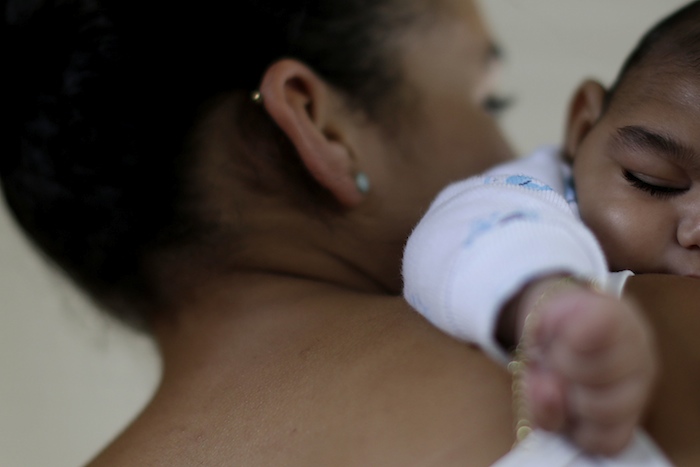
15-year-old Alice (name changed) holds her 4-month-old baby, born with microcephaly in Recife, Brazil. She says "... we don’t know exactly what will happen to him ..." ©UNICEF/UN011564
In April 2016, the CDC confirmed the link between Zika and microcephaly.
As of August 18, 2016, the World Health Organization (WHO) has recorded approximately 1,926 babies born with microcephaly or other Zika-related brain defects, with thousands of other suspected cases awaiting investigation.
4. How does Zika spread?
Zika is spread primarily by mosquitoes, particularly one species known as Aedes egypti. Only female mosquitoes seek to ingest blood in order to lay their eggs, later, in water.
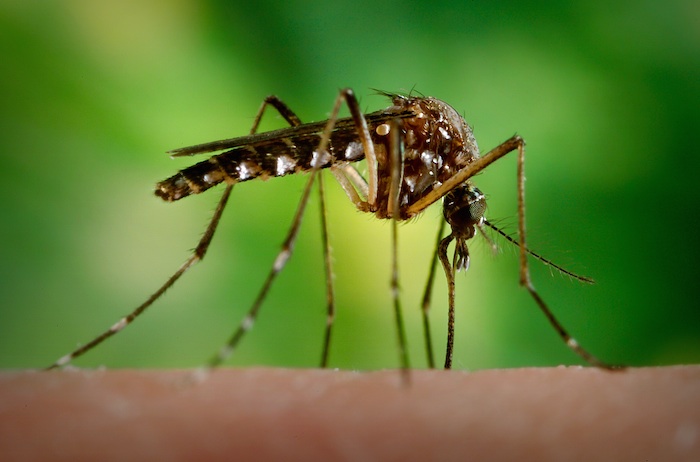
As the primary insect responsible for transmitting the Zika virus — and the viruses that cause dengue and yellow fever — the day-biting Aedes aegypti mosquito prefers to feed on human hosts. ©CDC/Gathany
Zika is spread primarily by mosquitoes.
However, Zika can also spread in three other ways: 1) during unprotected sex; 2) from mother-to-child during pregnancy or at delivery and 3) by blood transfusions.
5. Where is Zika now?
In February 2016, the WHO declared that Zika's spread had created a global public health emergency.

Countries and territories with reported confirmed vector-borne transmission of Zika virus infection in the past three months, according to the European Centres for Disease Prevention and Control (ECDC). ©ECDC/August 26, 2016
As of August 18, 2016, the WHO reported that mosquito-borne Zika had spread to 70 countries and territories. Seventeen countries have reported babies born with microcephaly or other Zika-associated birth defects. Eighteen countries have reported increased cases of Guillain-Barré Syndrome among adults infected with Zika.
As of August 18, the WHO reports that Zika has spread to 70 countries.
As of August 18, 2016, the following countries were added to the growing list of regions with Zika infections and related birth defects: the Bahamas, which reported its first cases of mosquito-borne Zika, and Honduras and Suriname, which reported their first cases of microcephaly among newborns.
6. What can women do to protect themselves and their babies?
Knowledge — in conjunction with mosquito-control measures — is our most powerful weapon in halting Zika and protecting pregnant women. Dr. Heather Papowitz, UNICEF's senior advisor for health emergencies, explained, "We need to act fast to provide women and pregnant mothers with the information they need ... and we need to engage with communities on how to stop the mosquito that is carrying and transmitting this virus."
Knowledge is our most powerful weapon in halting Zika.
In Brazil, and other affected countries, UNICEF is urging women to take simple prevention measures that include using insect repellent, covering as much of the body as possible with long, light-colored clothing, eliminating standing water where mosquitoes can lay eggs and putting screens on windows and doors.
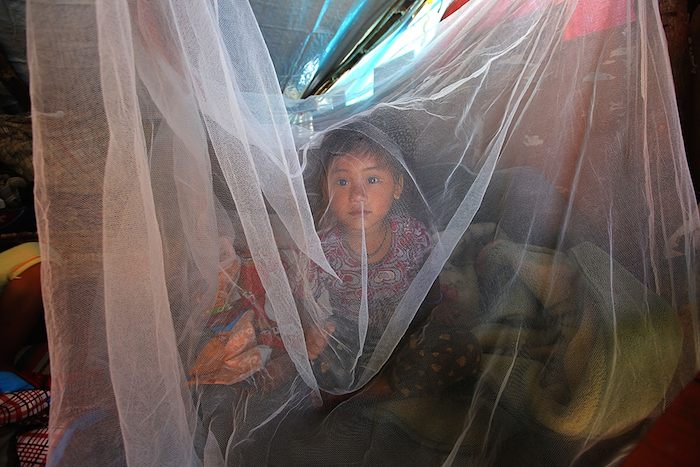
UNICEF and its partners are distributing mosquito nets, like this one that is protecting a girl in Nepal, to children and their families in Brazil. ©UNICEF/UNI184813/Panday
Pregnant women who think they may have been exposed to the virus should seek care from a trained health care provider as soon as possible.
7. What is UNICEF doing about Zika?
While preventing Zika's spread will be challenging in the U.S, stopping Zika in the countries where UNICEF works will be much more difficult. This is due both to environmental conditions and a dearth of resources.
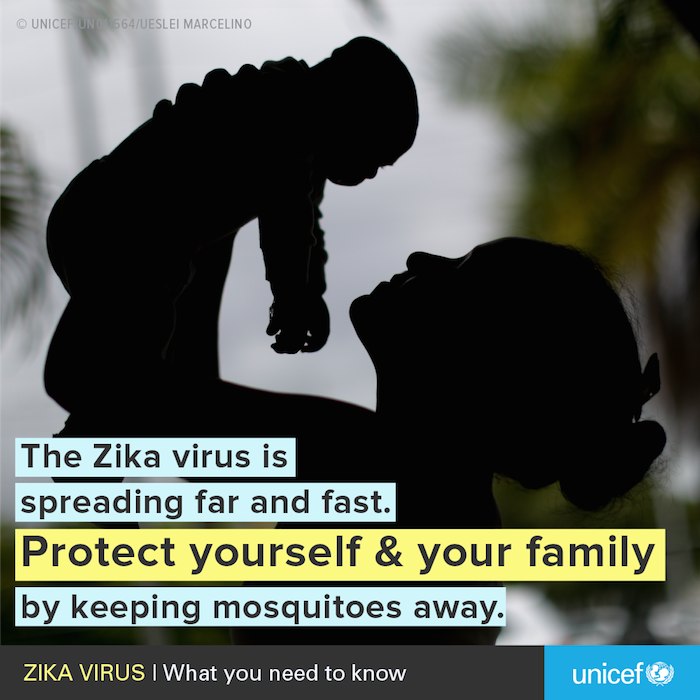
In Brazil, UNICEF is launching public health messages like this about Zika prevention.
As a result, UNICEF is working closely with both WHO and the Pan American Health Organization (PAHO) to prevent the spread of Zika.
Building on long-standing partnerships with national and local authorities, civil society organizations and community networks, UNICEF is using its 24 offices serving 35 Latin American and Caribbean countries and territories to mitigate the impact of Zika on children and families.

UNICEF is working to help communities stop the spread of Zika (and Zika-carrying mosquitoes) by taking proper care of water tanks like these in the La Cholera camp in Ecuador, where children and their families, left homeless by the recent earthquake, are living temporarily.
For example, after the Ecuador earthquake, the number of Zika cases in Ecuador has increased dramatically, with the sharpest surge in quake-hit areas. UNICEF launched a Zika awareness and prevention campaign and mosquito control initiatives, including the distribution of impregnated netting and water tank cleaning supplies for vulnerable families.
UNICEF’s goals include reaching at least 200 million people with Zika prevention messages.
UNICEF’s goals include reaching at least 200 million people in Latin America and the Caribbean with key Zika prevention messages. UNICEF also plans to facilitate the creation of at least two rapid diagnostic tests and two possible Zika vaccines.
On March 3, Google announced a $1 million donation to UNICEF to fight the spread of Zika. UNICEF is working with Google engineers to map and anticipate Zika. UNICEF expects to use this data to reach 200 million people with critical information on staying safe.
8. How has UNICEF fought other mosquito-borne diseases?
For more than 50 years, UNICEF has been working to protect children and families in Latin America and the Caribbean against mosquito-borne disease.

In 1958, in the Guayaquil coastal region of Ecuador, a malaria campaign worker sprays the outside of a house with UNICEF-supplied insecticide to kill malaria-bearing mosquitoes. ©UNICEF/1958
Since the 1950's, UNICEF has provided insecticides, vehicles and equipment in support of nationwide mosquito control campaigns.
For more than 50 years, UNICEF has worked to protect children against mosquito-borne disease.
Today, UNICEF is working with governments and regional organizations to help keep communities safe from Zika. Globally, UNICEF is a leader in the fight against mosquito-borne diseases like dengue and malaria, still big killers of children.
9. How is the U.S. preparing to fight Zika?
President Barack Obama has asked Congress for $1.8 billion for mosquito control, education outreach, vaccine research and aid to the populations most affected. Congress has not yet approved this request.
The FDA has called for the screening of all blood donations nationwide.
On August 26, the federal Food and Drug Administration (FDA) requested that that all blood banks screen blood donations for the Zika virus, even in states where Zika is not yet present.
Watch a Zika prevention video, part of the New York City Department of Health and Mental Hygiene's Zika prevention initiative, launching this month.
The CDC is tracking the spread of Zika, training healthcare providers how to identify it, researching links between Zika and microcephaly and Guillain-Barré Syndrome, issuing travel advisories, facilitating Zika testing, and raising public awareness of the disease and its risks.
Cities and towns across the country are gearing up to fight Zika.
Cities and towns across the country are gearing up to fight Zika and the mosquitoes that carry it. In Florida, for example, where mosquito-born Zika has been found in two parts of Miami-Dade County, public health authorities are engaging in mosquito control, Zika testing and public awareness campaigns. New York City has launched a public health campaign and a mosquito surveillance and eradication program.
10. How can you help fight Zika?
Targeting countries where the virus has already infected many people is one of the best ways to stop Zika globally. In places where people can't afford screens, insecticide-treated mosquito nets and health care for newborns with microcephaly, mothers and children urgently need your help.

UNICEF is concerned about children like this Ecuadorian girl, living in a temporary shelter after the recent Ecuador earthquake, who are near coastal "hotspots" for mosquito-borne diseases such as Zika and dengue. ©UNICEF/UN017390
UNICEF and its partners also need funding to launch effective public health campaigns about Zika prevention.
As Zika spreads worldwide, researchers identify a drug that may prevent the virus from infecting babies.
Researchers have also reported finding several possible pathways for Zika to infect the developing fetus in pregnant mothers. They have also identified a drug that may prevent maternal transmission of Zika.
As part of its own funding appeal for Zika, UNICEF seeks to support research on medical tools and solutions like these, including rapid Zika diagnostic tests and vaccines.
Developing and fielding a Zika vaccine will require substantial funding.
Developing and fielding rapid diagnostic tests and a Zika vaccine will require substantial funding. But these medical tools will benefit everyone — whether you live in a region with Zika or plan to visit a country where Zika is prevalent.
Stand for Hope. Please donate to UNICEF's Zika response now.
HOW TO HELP
There are many ways to make a difference
War, famine, poverty, natural disasters — threats to the world's children keep coming. But UNICEF won't stop working to keep children healthy and safe.
UNICEF works in over 190 countries and territories — more places than any other children's organization. UNICEF has the world's largest humanitarian warehouse and, when disaster strikes, can get supplies almost anywhere within 72 hours. Constantly innovating, always advocating for a better world for children, UNICEF works to ensure that every child can grow up healthy, educated, protected and respected.
Would you like to help give all children the opportunity to reach their full potential? There are many ways to get involved.
